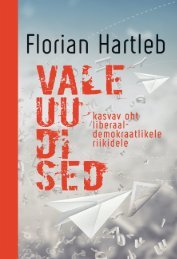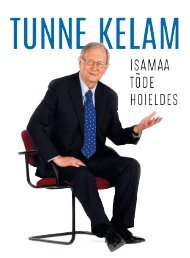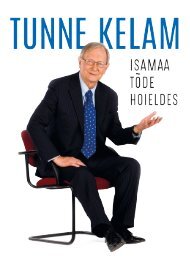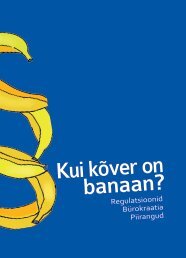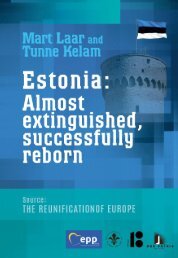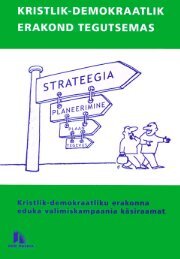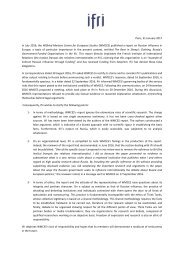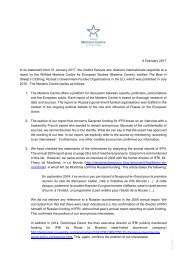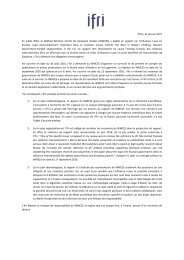ESTONIA: Almost extinguished, successfully reborn
The following text is the shortest possible review to help inform friends and guests from abroad about Estonia’s experience with foreign occupation and totalitarianism as well as its road to peacefully re-establishing national inde-pendence on the basis of democracy. Tunne Kelam Member of the European Parlament
The following text is the shortest possible review to help inform
friends and guests from abroad about Estonia’s experience with
foreign occupation and totalitarianism as well as its road to
peacefully re-establishing national inde-pendence on the basis
of democracy.
Tunne Kelam
Member of the European Parlament
You also want an ePaper? Increase the reach of your titles
YUMPU automatically turns print PDFs into web optimized ePapers that Google loves.
<strong>ESTONIA</strong>:<br />
<strong>Almost</strong><br />
<strong>extinguished</strong>,<br />
<strong>successfully</strong><br />
<strong>reborn</strong><br />
The Singing Revolution woke up the masses. On the<br />
political level, during the summer of 1988, the initiators<br />
of Hirvepark were preparing an alternative to the monopoly<br />
of the Communist Party. On August 20, 1988, the<br />
first democratic political party on the territory of the<br />
Soviet Union – the Estonian National Independence<br />
Party (ENIP) – was founded. While previous movements<br />
had evaded challenging the Communist dictatorship<br />
openly and envisaged their reform programs within the<br />
framework of the Soviet Union, ENIP proclaimed as its<br />
main objective the restoration of a fully independent<br />
Republic of Estonia on the basis of legal continuity.<br />
ENIP regarded political independence as the master key<br />
and precondition to genuine reforms. While the Soviet<br />
Estonian elites still distanced themselves from the idea<br />
of political independence, assessing it as unrealistic and<br />
provocative, one of the longest political taboos was<br />
broken. Since ENIP was not suppressed, its creation<br />
stimulated the restoration of the multi-party system not<br />
only in Estonia but also elsewhere in the Soviet Union.<br />
These changes had also an impact on Soviet structures.<br />
Already in September 1987 a proposal for an economically<br />
self-managing Estonia was made. In June<br />
1988 Karl Vaino, the long-time, staunchly pro-Moscow<br />
top communist leader was replaced by Vaino Väljas<br />
who gave a green light to Popular Front activities and<br />
avoided suppression of national democratic forces. In<br />
November 1988, the Estonian Supreme Council passed<br />
a declaration on sovereignty, thus moving towards open<br />
conflict with Moscow.<br />
40





